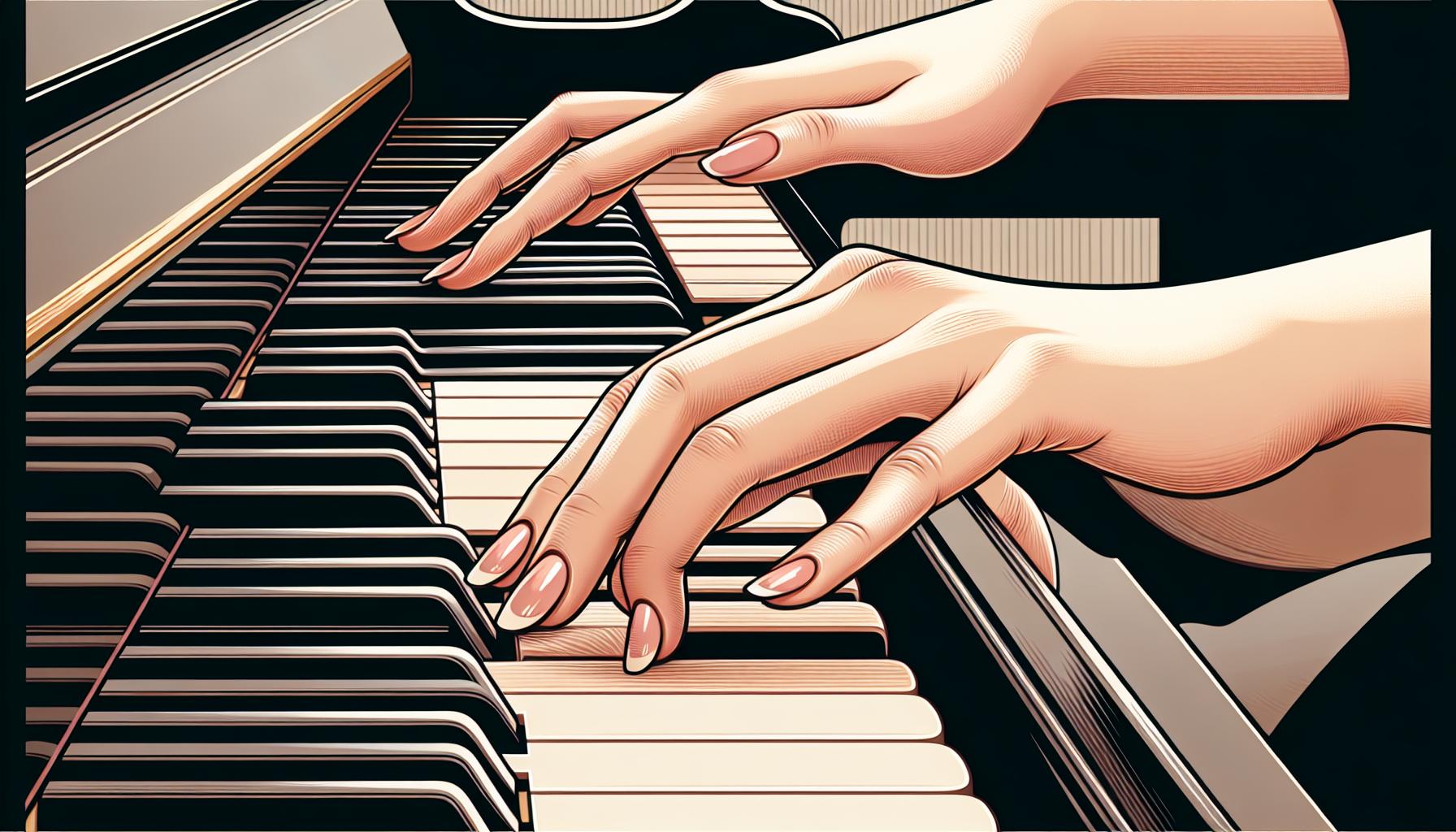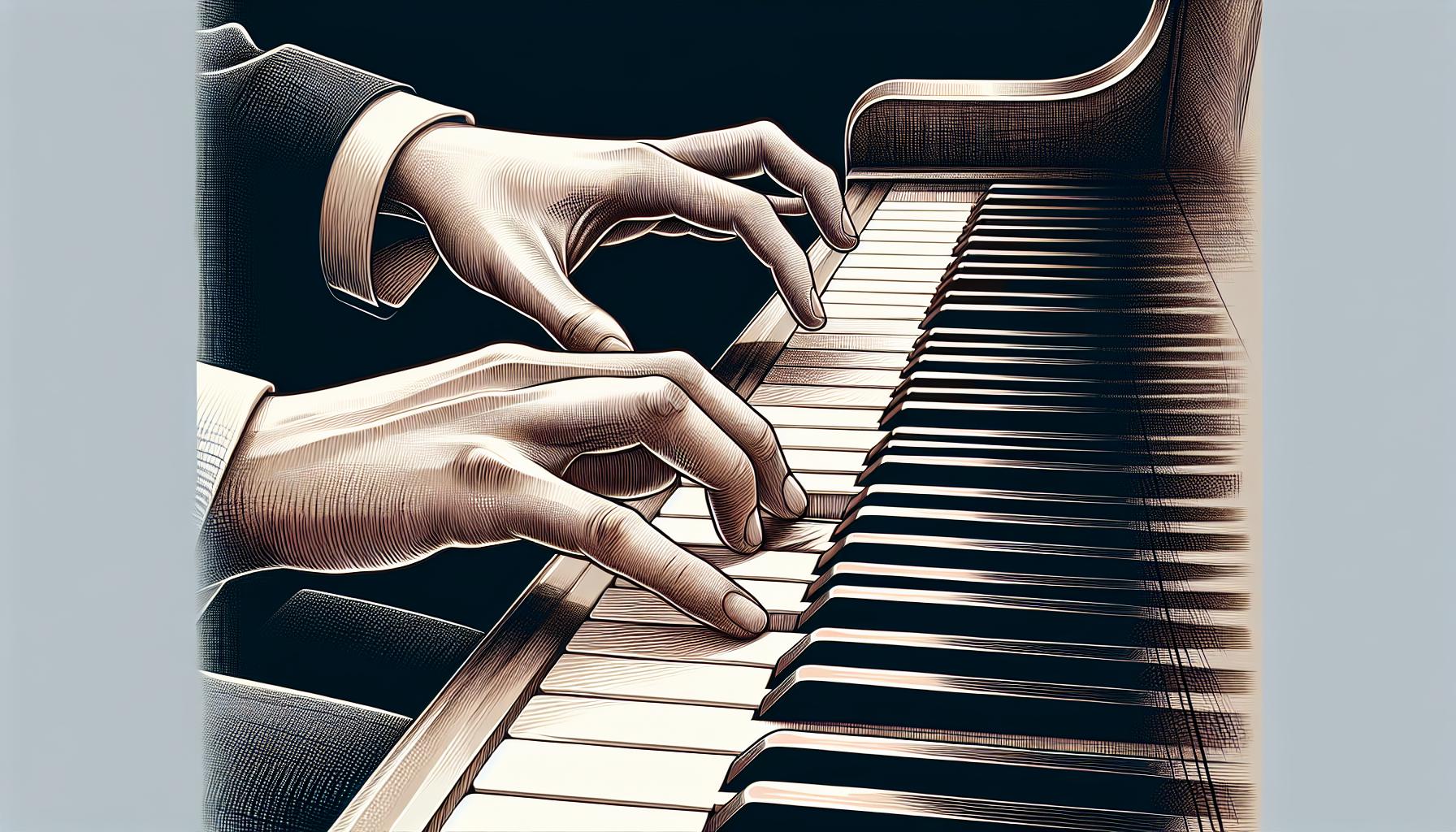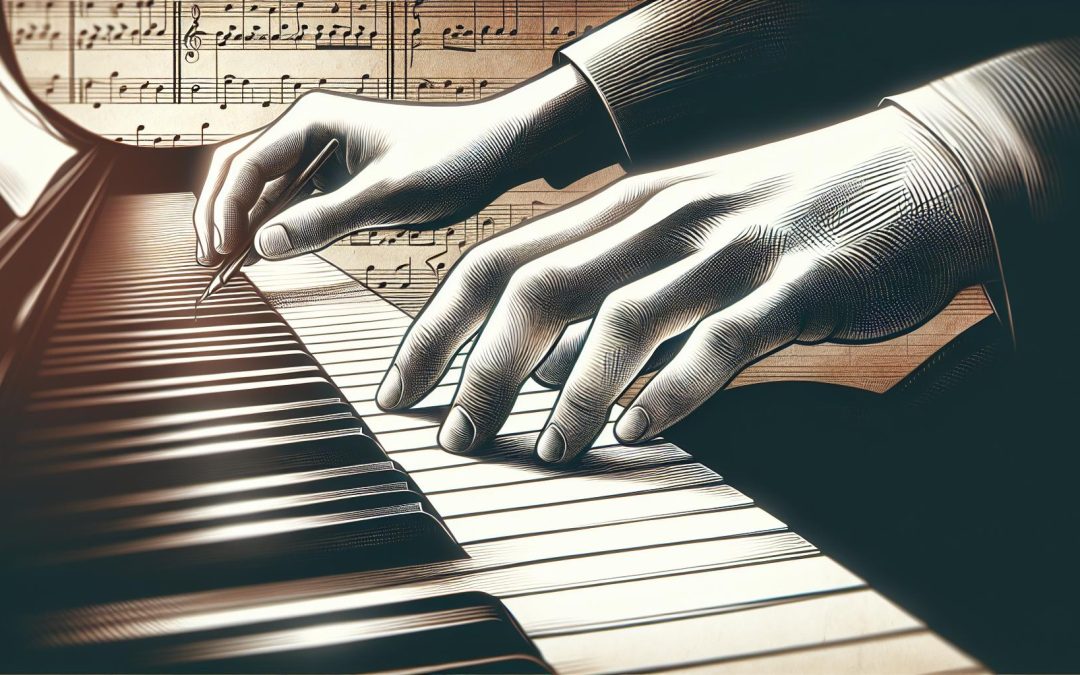Have you ever noticed while playing the piano that your left hand doesn't quite match up to the strength and dexterity of your right? It's a common issue that puzzles many pianists, from beginners to more seasoned players. The disparity in sound and control can be frustrating, making complex pieces feel even more challenging.
This phenomenon isn't just in your head. There's a mix of physiological and practice-related reasons behind it. Understanding why your left hand might be lagging can be the first step towards achieving a more balanced and harmonious performance. Let's dive into the reasons behind this musical mystery and explore how you can bring your left hand up to speed.
Muscle Imbalance
When pianists find that their left hand can't keep up with their right, it's often due to a Muscle Imbalance. Most people use their dominant hand for a variety of daily activities, from writing to eating, giving that hand more natural strength and dexterity. For many, this dominant hand is the right one—about 90% of the world's population is right-handed. This inherent discrepancy means the left hand is naturally starting at a disadvantage when it comes to playing an instrument as demanding as the piano.
The piano demands not only strength but also intricate control over fine motor skills. The left hand, being used less in everyday activities, is less developed in both aspects. It's not just about raw power; the fingers need to be able to move independently and with precision. The complexity of piano music, which often assigns the melody to the right hand and accompaniment or harmonic structures to the left, can exacerbate this discrepancy. This division of labor between the hands means the right hand often gets more practice in leading with melody, further advancing its dexterity and strength.
However, the good news is that the human body is remarkably adaptable. Just as athletes can train to improve their physical performance, pianists can engage in targeted exercises to build up the strength and dexterity of their left hand. This involves not just playing more pieces that challenge the left hand but also incorporating specific drills and practices designed to increase finger independence and control.
Here are some strategies pianists often use to address muscle imbalance:
- Daily technical exercises: Scales, arpeggios, and Hanon exercises can work wonders for building strength evenly across both hands.
- Left-hand focused pieces: Certain compositions are designed to give the left hand a more significant role or even the spotlight, such as Ravel's "Concerto for the Left Hand."
- Mirror practicing: Playing the same piece or exercise with both hands, but focusing on the movement and technique of the left.
Furthermore, mindfulness about posture and approach can prevent the development of tension in the left hand, a common issue that can further hamper its performance. A relaxed hand can move more freely and react more quickly, making it essential for pianists to also focus on ergonomic playing techniques.
Lack of Independence

When diving into the world of piano playing, one crucial challenge that often surfaces is the Lack of Independence between a pianist's hands. This phenomenon can significantly contribute to why a pianist's left hand sounds weaker compared to the more dominant right hand.
The art of playing the piano requires a sophisticated level of coordination, allowing each hand to perform different parts of a piece simultaneously. For most people, the right hand takes the lead in daily activities, from writing to using tools, which inherently builds more strength and dexterity in the right. This natural disparity becomes evident when both hands are required to operate independently on the piano keyboard.
For the left hand, which is typically less used in day-to-day activities, reaching the same level of independence and strength poses a serious challenge. Not only does it need to match the right hand's dexterity, but it also must develop separate cognitive pathways to execute distinct rhythmic and melodic lines. This need for independence can feel as if the pianist is attempting to split their brain in half, managing two lines of musical thought simultaneously.
To address this issue, pianists often engage in exercises designed explicitly for enhancing hand independence. This may include:
- Hanon Exercises: A series of finger exercises focusing on building strength and agility in each hand.
- Scales and Arpeggios: Playing these in contrary motion helps balance the hands' abilities and encourages independence.
- Polyrhythmic Exercises: Practicing rhythms that require different beats per hand can greatly enhance coordination.
Moreover, pieces composed specifically for left-hand development can play a pivotal role in overcoming the weakness. Composers like Scriabin and Ravel have contributed significantly to this repertoire, providing pieces that are not only challenging but also rich in musical texture and expression.
Another effective strategy involves the use of mirror practicing, where a pianist practices the right-hand part with their left hand and vice versa. This technique not only improves hand independence but also fosters a better understanding of the piece as a whole.
Despite the challenges, the journey towards achieving balance and independence between the hands is one of the most rewarding aspects of learning the piano. It's an ongoing process that requires patience, persistence, and a mindful approach to practice. Engaging regularly with exercises and pieces that challenge the left hand's capabilities is crucial. Through dedicated practice, pianists can gradually minimize the disparity, leading to a more balanced and expressive performance.
Hand Position and Technique

In addressing the common concerns around why the left hand often sounds weaker on the piano, the topic of hand position and technique emerges as a vital consideration. Many pianists, particularly those in the early stages of their learning journey, may not realize the impact that incorrect hand position can have on their ability to produce a balanced and powerful sound. Proper hand positioning involves maintaining a natural curve in the fingers, a relaxed wrist, and ensuring the hand is aligned with the forearm. This alignment is crucial for generating strength and agility in both hands.
When pianists neglect their left hand's positioning and technique, the disparity in sound production between the hands becomes more pronounced. The left hand requires the same level of attention and refinement in technique as the right hand to achieve symmetrical prowess. This includes practicing exercises that specifically focus on strengthening the left hand's fingers and improving its agility. Scale and arpeggio drills, when executed with a conscious emphasis on dynamics and articulation in the left hand, can significantly enhance its sonic output.
Another critical aspect of hand position and technique revolves around the concept of finger independence. This challenge is particularly acute in the left hand due to its less frequent use in daily, non-musical activities. Exercises designed to increase finger independence, such as those that isolate individual fingers while keeping the rest static, are particularly beneficial. They train the muscles to respond independently of each other, thereby enhancing the overall control and dexterity of the hand.
Tackling Common Technical Faults
Several common technical faults can contribute to the left hand sounding weaker. These include:
- Tension: Excessive tension in the hand and arm can inhibit movement and reduce the power of the left hand's touch. Regular attention to relaxing the muscles during practice can prevent this issue.
- Poor Fingering Choices: Inefficient fingering can lead to awkward hand positions that compromise the left hand's strength. Adopting fingering that promotes smooth transitions and comfortable reaches is essential.
- Lack of Practice Focus: Often, pianists spend a disproportionate amount of their practice time on right-hand parts. Allocating dedicated time to focus solely on left-hand music can rectify this imbalance.
By addressing these technical faults and incorporating specific exercises into their practice regimen, pianists can take significant strides in improving the strength and clarity of their left hand. This approach ensures not only a more balanced sound production between the hands but also promotes a more holistic development of piano technique.
Repertoire Bias

One often overlooked reason pianists may find their left hand sounding weaker than the right is Repertoire Bias. Traditionally, much of the classical piano repertoire emphasizes melodies in the right hand, relegating the left to accompaniment roles. This imbalance not only manifests in the compositions themselves but also in the practice habits of pianists. When learning a new piece, they might unintentionally allocate more practice time to perfecting the melody in the right hand, inadvertently neglecting the left hand's development. This bias towards right-hand-dominated pieces can create a cycle where the left hand's potential remains untapped, reinforcing its perceived weakness.
Furthermore, due to the historical and stylistic origins of much Western classical music, composers often wrote with a preference for showcasing virtuosic right-hand passages. Pieces like Chopin's "Revolutionary Etude" stand out as exceptions rather than the rule, spotlighting the left hand's capabilities but are far outnumbered by those favoring the right. This repertoire bias can lead pianists to have a less diverse technical exercise for the left hand, limiting their exposure to pieces that could equally challenge and develop both hands.
To combat the effects of repertoire bias, pianists are encouraged to explore compositions that offer a more balanced technical demand between hands or even those that spotlight the left hand. Pieces such as Ravel's "Le Gibet" and Brahms's Left-Hand Concerto are excellent for challenging the left hand, promoting greater balance and strength. Moreover, contemporary piano music often features more egalitarian hand roles, providing modern pianists with a broader selection of balanced repertoire.
Incorporating a variety of pieces into one’s practice routine is not just about balancing technical skills but also about broadening musical expression and understanding. By stepping outside the traditional repertoire and embracing works that give the left hand a more prominent role, pianists can start breaking the cycle of neglect. Starting with simpler pieces that focus on left-hand strength and gradually incorporating more complex compositions can make a significant difference in how equally developed both hands are. Teachers and students alike should strive to select pieces that promote this balance, ensuring a holistic development of piano technique.
Practice Strategies

Overcoming the challenge of a weaker left hand on the piano involves a disciplined approach to practice. Pianists must consciously allocate time to focus on strengthening their left hand, ensuring a more balanced skill set. Here are several effective strategies to incorporate into daily practice routines.
Symmetrical Practice is a key tactic. This involves mirroring the exercises or pieces practiced with the right hand with the left. For instance, if a pianist practices scales, arpeggios, or a particular passage with the right hand, they should also dedicate equal time and intensity to practicing those same pieces with the left hand. This method ensures that both hands receive the same amount of attention and work.
Targeted Repertoire selection can also significantly impact the development of the left hand. As mentioned earlier, much of the traditional piano repertoire does not prioritize left-hand development. To counter this, pianists should seek out pieces known for their left-hand challenges or those composed specifically for left-hand practice. Composers such as Scriabin, Rachmaninoff, and Ravel have compositions that place substantial demand on the left hand, offering a great resource for pianists looking to strengthen this area.
Incorporating Left-Hand Alone Practice into daily routines can dramatically improve left-hand strength and dexterity. Pianists should spend a portion of their practice time playing with the left hand alone, focusing on precision, strength, and agility without the dominance of the right hand. This isolation allows for a more focused approach to addressing weaknesses in the left hand.
Slow Practice is another technique pianists can utilize. Playing passages slowly with the left hand not only allows for greater accuracy but also ensures that the pianist can pay close attention to dynamics, articulation, and phrasing. Over time, this careful, deliberate practice will translate into improved performance at full speed.
Finally, Incorporating Technology into practice sessions can offer unique benefits. Digital tools and apps designed for musicians can track progress, offer exercises targeted towards left-hand improvement, and even gamify the learning process to keep motivation high. These technologies can provide immediate feedback and structured guidance, making practice sessions more efficient and productive.
Here are a few stats highlighting the significance of dedicated left-hand practice:
| Strategy | Benefit |
|---|---|
| Symmetrical Practice | Balanced skill development |
| Targeted Repertoire | Enhanced musical expression |
Conclusion
Mastering the piano involves overcoming challenges, including strengthening a weaker left hand. The strategies discussed, from Symmetrical Practice to leveraging Technology, offer a roadmap to achieving a more balanced and expressive performance. By dedicating time to Left-Hand Alone Practice and selecting Targeted Repertoire, pianists can significantly enhance their skill set. Remember, progress takes patience and persistence, but with these methods, improvement is not just possible—it's inevitable. Happy practicing!
Harlan Kilstein began playing piano during covid with no piano background at all. He taught himself how to play learning what to do and what not to do.
Today he's an advanced intermediate player and can help you grow in your skills because he learned all this on his own.








